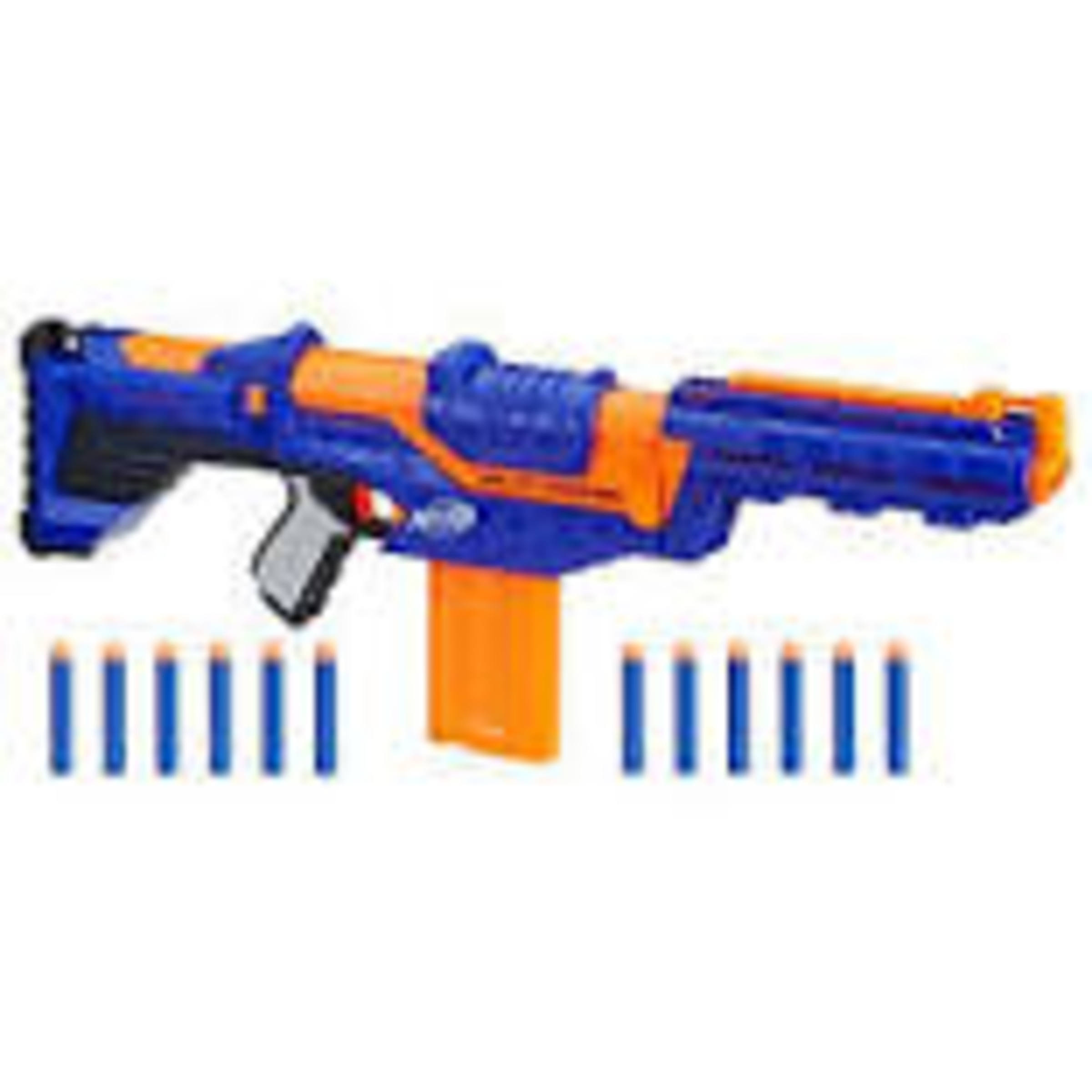Spring War
Timmy and Jimmy are playing a game with spring-loaded guns. The objective of the game is to not get hit by the plastic dart launched by the other player's gun. The spring-loaded guns are manufactured such that the spring within the gun can be compressed to any length up to 6 inches. The two boys chase each other until suddenly Timmy trips and falls on the ground. Jimmy decides to take aim at Timmy while he is struggling to get up and prepares to aim and fire. If Timmy is 15 feet away from Jimmy and Jimmy, who aims two degrees above eye-level at a height of 5 ft 9 inches, aims for Timmy's chest, which is 2.5 feet off of the ground, what is the minimum compression length of the spring in Jimmy's gun in inches?
Note:
-
Assume air resistance is negligible.
-
Treat Jimmy, Timmy, and the dart as point masses.
-
The mass of the dart is 1.3 g.
-
The maximum speed of the dart, which is achieved if the spring is fully compressed, is 409.44 in/s (NERF darts can shoot much faster than this...).
-
The acceleration due to gravity is 32.2 ft/s^2.
-
Assume that the spring is ideal and behaves according to Hooke's Law and does not release energy in the form of heat or sound.

The answer is 5.451562.
This section requires Javascript.
You are seeing this because something didn't load right. We suggest you, (a) try
refreshing the page, (b) enabling javascript if it is disabled on your browser and,
finally, (c)
loading the
non-javascript version of this page
. We're sorry about the hassle.
Applying the law of conservation of mechanical energy yields: E k 0 + U g 0 + U s p 0 = E k 1 + U g 1 + U s p 1
2 1 k x C 2 = 2 1 m v 0 2
Where k is the spring constant, x C is the compression length of the spring, m is the mass of the dart, and v 0 is the initial velocity of the dart when it leaves the chamber of the gun.
Solving for v 0 yields v 0 = x C m k . If we solve for k in the same equation, we get k = x C 2 m v 0 2 . Knowing that when x C = l , v 0 = v m a x , we can solve for k by substituting these values, yielding k = l 2 m v m a x 2 = ( 6 i n ) 2 ( 0 . 0 0 1 3 k g ) ∗ ( 4 0 9 . 4 4 i n / s ) 2 = 6 . 0 5 3 7 k g / s 2 .
Let the trajectory of the dart be described by the coordinates ( x ( t ) , y ( t ) ) = ( v 0 cos ( a ) t , − 2 g t 2 + v 0 sin ( a ) t + h 0 ) where a is the angle of elevation of the gun, g is the acceleration due to gravity, and h 0 is the initial height of the dart.
The dart impacts Timmy at a time T such that x ( T ) = x 1 where x 1 is the distance between Timmy and Jimmy (Jimmy is assumed to be at (0, h 0 ) ). Solving for T yields T = v 0 cos ( a ) x 1 .
At this same time T , y ( T ) = h 1 . Substituting T for t in − 2 g t 2 + v 0 sin ( a ) t + h 0 = h 1 and solving for v 0 2 yields v 0 2 = 2 cos 2 ( a ) ( x 1 tan ( a ) + h 0 − h 1 ) g x 1 2 .
Substituting v 0 = x C m k and solving for x C yields x C = 2 k cos 2 ( a ) ( x 1 tan ( a ) + h 0 − h 1 ) m g x 1 2 . Upon substituting all given values for m , g , k , x 1 , a , h 0 , and h 1 returns a value of 5.451562 in for x C . This is the minimum value needed to hit Timmy, as in order to hit the target one could have just compressed the spring to its maximum length (but that wouldn't have been a fun problem, would it?)